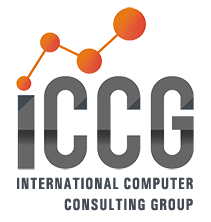Building a Power Team:
The first major step in the journey toward adopting a new ERP system for your organization is assembling an effective project team. A well-appointed team can help you not only select the best possible ERP system suited to meet your organization’s needs but also mitigate employee resistance and secure leadership buy-in.
Assembling an all-star team for your ERP project is critical to your implementation success, so do not take these decisions lightly.
Read More
Topics: ERP, Distribution, Supply Chain, Fashion & Apparel, Supply Chain Visibility, digital disruption, Enterprise Resource Planning, Enterprise Software, Retail Supply Chain, Supply Chain Operations, Infor CloudSuite M3, Infor CloudSuite ERP
Mergers and acquisitions (M&A) bring numerous challenges across all departments. But IT teams are often charged with providing the underlying infrastructure that will allow the organizations to operate successfully under a new configuration. This is a big ask and typically occurs with little warning, and regardless of how much ongoing work exists in the day job.
There are plenty of factors that can further complicate this scenario, including when the company is acquired or merged is in a different country with unique reporting and regulatory requirements. While part of an important growth strategy for the organization, these moves can put tremendous pressure on already taxed IT staff.
Read More
Topics: ERP, Change Management, Enterprise Resource Planning, Implementation Partner, Technology, CloudSuite, Risk & Compliance, Cloud, cloud migration
Even when you do everything right, the unexpected can happen. Natural disasters strike, equipment fails, and human errors occurs. While steps were taken to mitigate risk, when disaster strikes, it’s still up to you and your team to race to recover, to ensure actions to get back online are taken correctly, and time is never on your side.
If your organization previously reviewed and dismissed the value of the cloud, it’s time to reevaluate. Decisions that seemed to make sense last year or even last quarter, likely look very different through today’s lens. This week, we focus on critical system failure and how unexpected outages can bring a company’s mission-critical operations to its knees.
Losses can be initially staggering and ultimately far-reaching, impacting not only revenue and productivity but also long-term brand value. It’s been estimated that the average cost of IT downtime is $5,600 per minute, with $140,000 per hour on the low end and as much as $540,000 per hour at the higher end. Absorbing the activities to resolve the issue itself and then putting in place actions across the organization to recover from the critical failure and its consequences can derail an organization for an extended period of time.
Read More
Topics: ERP, Change Management, Enterprise Resource Planning, Technology, CloudSuite, Risk & Compliance, Cloud, cloud migration
For many organizations, the realization that your go-to people, those who truly understand all the nuances in your enterprise ecosystem, are no longer there comes too late. Whether this loss comes through resignation, retirement, health issues, or merger and acquisition, you will need to find replacements. How can your organization ensure the continuity of day-to-day operations with the potential loss of technical expertise?
One of the ways to mitigate this risk is to accelerate cloud migration.
Many clients have shared with me that in today's challenging times, they need to focus on their core business and not worry about running IT systems. What would happen if your IT experts are no longer available?
Read More
Topics: ERP, Enterprise Resource Planning, Technology, CloudSuite, Cloud, cloud migration
Are you reducing idle cash while reducing risks?
Today, financial services organizations are more focused on what’s necessary to safeguard business continuity and solvency. Much of this begins with greater visibility and reliability of key data to help drive your critical business decisions, especially during critical market changes.
Our current blog series is reviewing cash and treasury best practices you can follow to prepare for instant payment changes and build true cash visibility. Last week we looked at understanding the impact of instant payments. In part two this week, we focus on generating cash positioning.
Consideration #2: Generate cash positioning
To satisfy both operational and regulatory requirements, financial services organizations need operating models for cash and liquidity management. To achieve and maintain this capability successfully, organizations need to focus on gaining greater visibility into their cash and liquidity.
Download the eBook
Cash and treasury: Prepare for instant payments and build true cash visibility
Read More
Topics: ERP, Distribution, Supply Chain, Enterprise Resource Planning, Cloudsuite Fashion & Apparel, Infor M3 ERP, Infor CloudSuite PLM for Fashion, Infor CloudSuite Fashion PLM, Enterprise Software, Infor CloudSuite Fashion, Supply Chain Management, Infor CloudSuite M3, Infor CloudSuite ERP
Today, financial services organizations are more focused on what’s necessary to safeguard business continuity and solvency. Much of this begins with greater visibility and reliability of key data to help drive your critical business decisions, especially during critical market changes.
Whether you call it faster payments, immediate payments, instant payments, or fast money, real-time payments technology has gained a solid foothold in the payment processing world.
Additionally, to satisfy both operational and regulatory requirements, you need operating models for cash and liquidity management. To successfully achieve and maintain this capability organizations need to focus on gaining greater visibility into their cash and liquidity.
Download the eBook
Cash and treasury: Prepare for instant payments and build true cash visibility
We have compiled a blog series that will focus on cash and treasury best practices you can follow to prepare for significant changes with instant payments and build true cash visibility. This week, we focus on the first consideration: understanding the impact of instant payments.
Read More
Topics: ERP, Distribution, Supply Chain, Enterprise Resource Planning, Cloudsuite Fashion & Apparel, Infor M3 ERP, Infor CloudSuite PLM for Fashion, Infor CloudSuite Fashion PLM, Enterprise Software, Infor CloudSuite Fashion, Supply Chain Management, Infor CloudSuite M3, Infor CloudSuite ERP
State governments want their software to be secure, compliant and designed for the 21st century. As such, many state governments are evaluating their current ERP platforms to determine how to modernize financials, procurement, human capital management, and payroll applications.
While some have pursued modernization by embarking on multi-tenant cloud journeys, most organizations are still in the planning phase.
They are moving in the right direction, though, as multi-tenant cloud SaaS software ensures applications are continually enhanced without the need for a multi-million-dollar, multi-year project. Multi-tenant cloud software also protects limited resources from overwhelming or menial tasks such as:
- Babysitting servers
- Applying and testing an endless number of patches
- Performing backups
- Managing disaster recovery
Read More
Topics: ERP, Distribution, Supply Chain, Enterprise Resource Planning, Cloudsuite Fashion & Apparel, Infor M3 ERP, Infor CloudSuite PLM for Fashion, Infor CloudSuite Fashion PLM, Enterprise Software, Infor CloudSuite Fashion, Supply Chain Management, Infor CloudSuite M3, Infor CloudSuite ERP
Are you able to monitor all intraday activity for true cash visibility?
Today, financial services organizations are more focused on what’s necessary to safeguard business continuity and solvency. Much of this begins with greater visibility and reliability of key data to help drive your critical business decisions, especially during critical market changes.
Our current blog series is reviewing cash and treasury best practices you can follow to prepare for instant payments and build true cash visibility. In the previous post, we reviewed best practices for enhancing cash and liquidity forecasting. This week, we focus on ways to establish intraday liquidity monitoring capabilities.
Consideration #4: Establish intraday liquidity monitoring capabilities
Banks and financial services organizations bound by intraday liquidity regulations have an opportunity to build a stronger competitive position.
According to consulting firm Oliver Wyman: “Analysis indicates that a 25–50% reduction in intraday liquidity costs is well within reach. Further, banks will also stand to benefit from optimal efficiency, improved risk management, and timely decision-making around this scarce resource.” There are numerous financial and non-financial benefits, as well as new technological tools that simplify these complex treasury functions.
Download the eBook
Cash and treasury: Prepare for instant payments and build true cash visibility
Read More
Topics: ERP, Distribution, Supply Chain, Enterprise Resource Planning, Cloudsuite Fashion & Apparel, Infor M3 ERP, Infor CloudSuite PLM for Fashion, Infor CloudSuite Fashion PLM, Enterprise Software, Infor CloudSuite Fashion, Supply Chain Management, Infor CloudSuite M3, Infor CloudSuite ERP
Employees at hotel and other hospitality locations are the heart of their organisations, representing company values and mission to deliver the best possible guest experience consistently. But hospitality industry trends coming out of a very disruptive period show a worrying shortage of labour, with workers having time and financial support during lockdown to consider other options when it comes to their careers and their futures.
Making sure that hospitality work is rewarding, and that environments are supportive is more important than ever before to the future of the industry. How does advanced hotel technology help to address this vital concern? How must systems and processes in hotels and resorts best support hospitality workers day to day, help to identify how to reward their hard work, and retain their talent? Here are some examples to consider.
Read More
Topics: ERP, Fashion & Retail, Food & Beverage, Infor M3, Fashion & Apparel, Enterprise Resource Planning, CloudSuite Food & Beverage, Cloudsuite Fashion & Apparel, Infor M3 ERP
If you follow industry news, attend prospect events, or read our partner Infor's website, you know that vertical industry expertise is a favorite topic for Infor executives, leaders, and strategists. Industry-specific functionality is part of our critical foundation and a strong differentiating feature for our software solutions, we say frequently. But, have you thought about why? Do you know where our industry expertise comes from and how we leverage it into valuable selling points? Let’s look closer at what “industry expertise” means, why we are highly focused on it as a strategy, and how it will propel Infor forward.
The backstory
To understand where we are going, it helps to know how we got here. History provides context. In the evolution of ERP solutions, there’s a long and winding road that providers and users travelled before today’s Software as a Service (SAAS) model became the accepted best practice. In early days of ERP solutions, massive monolithic solutions with complex architecture and rigid code structure were the norm. Large enterprises invested heavily and hired consultants to customize the operational features. The heavily modified systems were costly to update.
Then came cloud computing. But, for companies to take advantage of the benefits of multi-tenant cloud deployment, they needed to have their industry-specific functionality already built into the solution—so modifications wouldn’t be needed. Modifications slow down deployment and can get in the way of upgrades.
Infor had been heavily investing into industry-specific features of the core ERP solutions. The solutions contain the functionality needed for industry specific applications—making it easier to migrate to the cloud.
Read More
Topics: ERP, Fashion & Retail, Food & Beverage, Infor M3, Fashion & Apparel, Enterprise Resource Planning, CloudSuite Food & Beverage, Cloudsuite Fashion & Apparel, Infor M3 ERP










